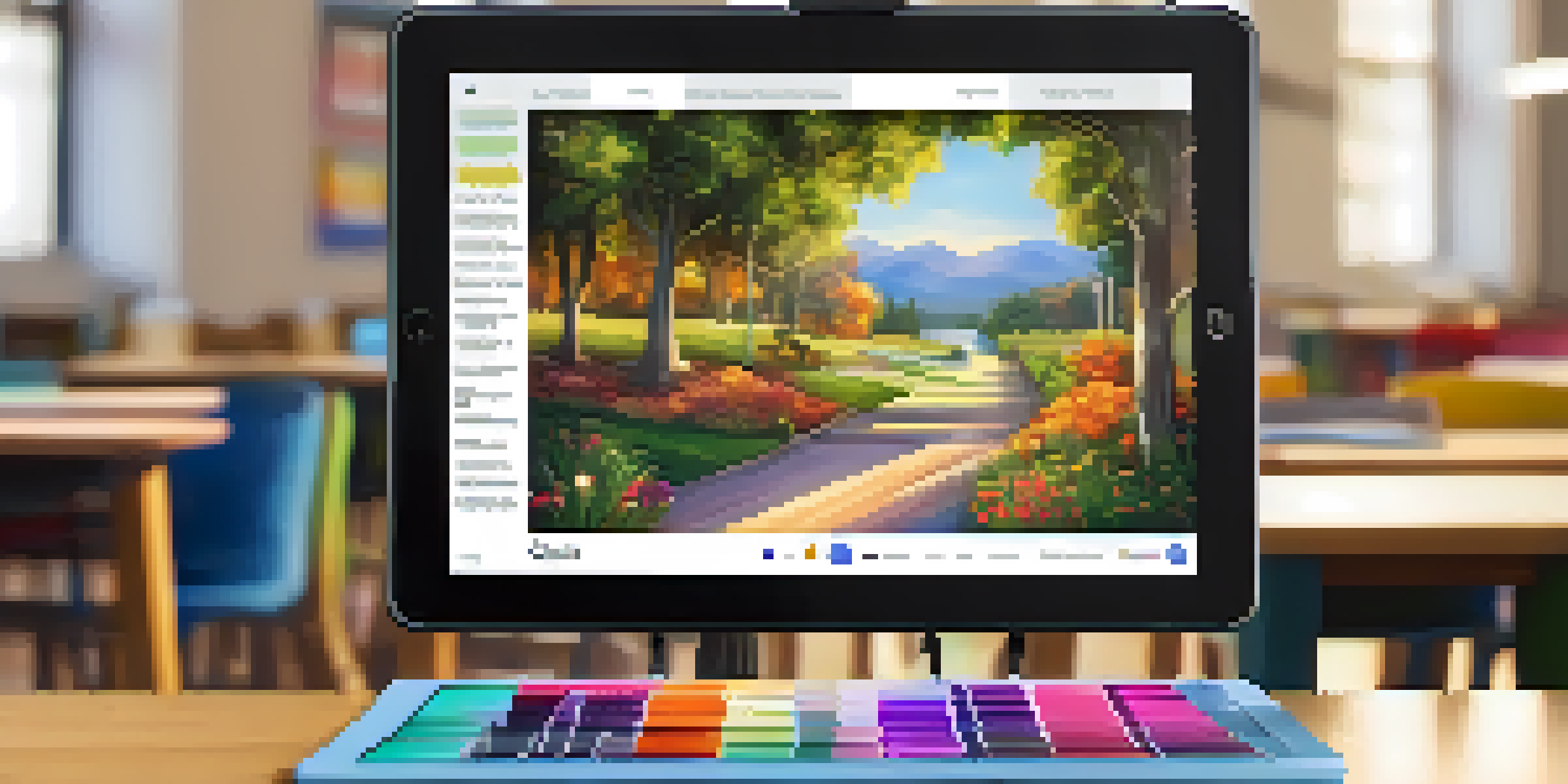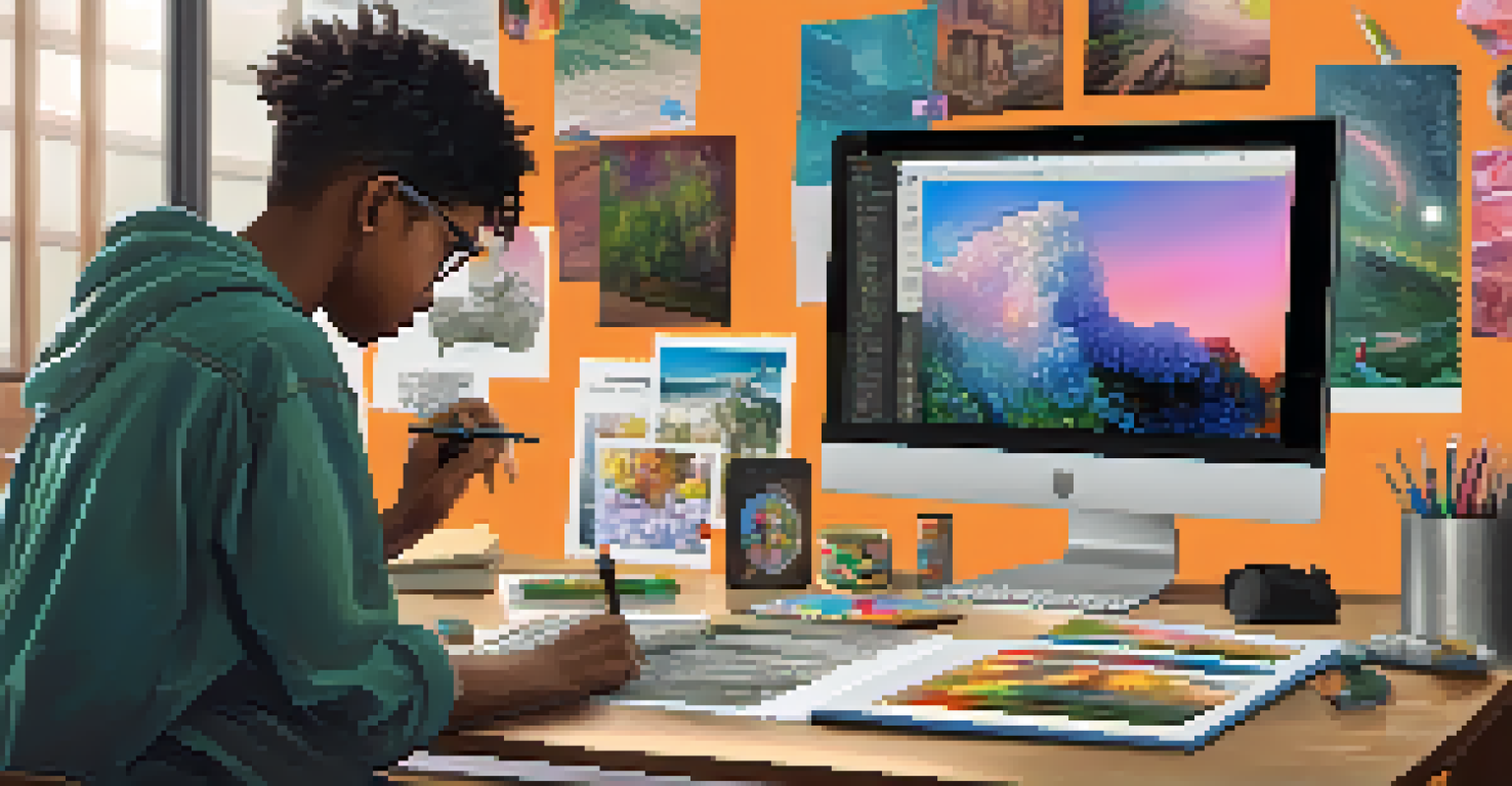Digital Portfolios: A Path to Student Autonomy and Voice

Understanding Digital Portfolios and Their Purpose
Digital portfolios are collections of student work that showcase learning and achievements over time. They can include various formats, such as essays, projects, videos, and artwork, providing a comprehensive view of a student's abilities. The purpose of these portfolios is not just to display work but to facilitate reflection and growth.
Education is not preparation for life; education is life itself.
By using digital portfolios, students can take charge of their learning journey. They select which pieces represent their skills and interests, fostering a sense of ownership. This autonomy is crucial as it encourages students to engage more deeply with their education.
Moreover, digital portfolios provide a platform for students to express their unique voices. By curating their work, they can highlight personal stories and experiences, making their portfolios not just a collection but a narrative of their educational journey.
The Role of Autonomy in Student Learning
Autonomy is a key component of effective learning. When students have the freedom to make choices about their education, they are more likely to feel invested in the process. Digital portfolios empower students to take control of their learning paths, allowing them to choose what to include and how to present it.

This sense of control can lead to increased motivation and engagement. For instance, a student passionate about art may choose to showcase their drawings and paintings, which not only enriches their portfolio but also fuels their enthusiasm for learning. It’s this kind of personal investment that can transform education from a chore into a thrilling exploration.
Digital Portfolios Foster Autonomy
Students gain ownership of their learning by curating their digital portfolios, which enhances engagement and investment in their education.
Additionally, autonomy helps students develop critical thinking and decision-making skills. As they curate their portfolios, they must reflect on their work, assess their strengths and weaknesses, and articulate their learning experiences. These skills are invaluable, preparing them for future academic and professional challenges.
Encouraging Student Voice Through Digital Portfolios
Student voice refers to the ability of students to express their thoughts, ideas, and feelings about their learning experiences. Digital portfolios are an excellent medium for amplifying this voice, as they allow students to present their work in a way that resonates with their identity. Each portfolio becomes a canvas where students can share their perspectives.
The greatest gifts you can give your children are the roots of responsibility and the wings of independence.
For example, a student who struggled with traditional assessments may find their voice through storytelling in their portfolio. By including reflective pieces about their challenges and triumphs, they can communicate their journey and insights more authentically. This not only validates their experiences but also encourages others to share similar stories.
Moreover, showcasing student voice through portfolios can foster a sense of community. When students share their portfolios with peers, it creates opportunities for dialogue and feedback, leading to collaborative learning. This exchange of ideas can help students feel valued and heard, further enhancing their educational experience.
Benefits of Digital Portfolios for Educators
Digital portfolios offer significant advantages for educators as well. They provide a wealth of information about student progress and learning styles, allowing teachers to tailor their approaches more effectively. By reviewing portfolios, educators can identify strengths and areas for improvement, facilitating targeted support.
Additionally, digital portfolios foster a more holistic view of student development. Rather than relying solely on standardized test scores, teachers can assess creativity, critical thinking, and personal growth through the artifacts presented. This comprehensive assessment approach enriches the educational experience, helping to create well-rounded learners.
Amplifying Student Voice Through Artifacts
Digital portfolios allow students to share their unique stories and experiences, creating a platform for authentic expression.
Furthermore, implementing digital portfolios encourages collaboration among educators. Teachers can share best practices, portfolio examples, and assessment strategies, enhancing their professional development. This collaborative spirit ultimately benefits students, as they receive a more cohesive and supportive learning environment.
Best Practices for Implementing Digital Portfolios
To successfully implement digital portfolios, educators need to establish clear guidelines and expectations. Setting criteria for what to include and how to present work helps students understand the purpose of the portfolio. This clarity allows them to focus on quality rather than quantity.
It's also essential to provide students with ongoing support and resources. Workshops on portfolio design, reflection techniques, and technology tools can empower students to create meaningful portfolios. By fostering a supportive environment, educators can inspire students to take ownership of their portfolios.
Moreover, regular check-ins and feedback sessions can enhance the portfolio process. Encouraging students to share their progress allows for constructive feedback and keeps them motivated. By creating a culture of reflection and collaboration, the digital portfolio experience becomes more enriching for all involved.
Overcoming Challenges in Digital Portfolio Adoption
While digital portfolios offer numerous advantages, challenges can arise during their implementation. One common hurdle is the technological barrier, as not all students may have equal access to devices or the internet. Educators must be mindful of these disparities and seek solutions, such as providing school resources or alternative formats.
Another challenge is ensuring that students understand how to effectively use digital tools for their portfolios. Training sessions and detailed instructions can help demystify the technology, allowing students to feel confident in their abilities. Providing examples of successful portfolios can also serve as inspiration.
Holistic Assessment for Educators
Digital portfolios provide educators with a comprehensive view of student progress, enabling tailored teaching strategies and support.
Lastly, it’s important to address concerns around privacy and security. Educators should emphasize responsible sharing practices and inform students about the implications of displaying their work online. Establishing guidelines for what can be shared publicly versus privately can help create a safe space for student expression.
The Future of Digital Portfolios in Education
As education continues to evolve, so too will the role of digital portfolios. With advancements in technology, portfolios will likely become even more interactive and dynamic. Features such as multimedia integration, collaborative elements, and real-time feedback will enhance the student experience and engagement.
Moreover, the growing emphasis on personalized learning will make digital portfolios an essential tool. They will allow students to reflect on their individual learning journeys and set goals tailored to their needs. This shift towards personalization will empower students to take charge of their education in unprecedented ways.

Finally, as more educators recognize the value of digital portfolios, we can expect a broader acceptance and integration into curricula. This shift will not only enhance student autonomy and voice but will also reshape the educational landscape, making learning more student-centered than ever before.